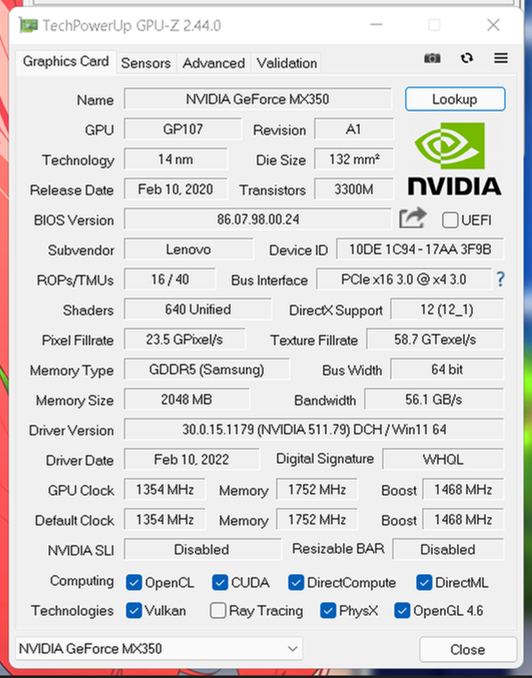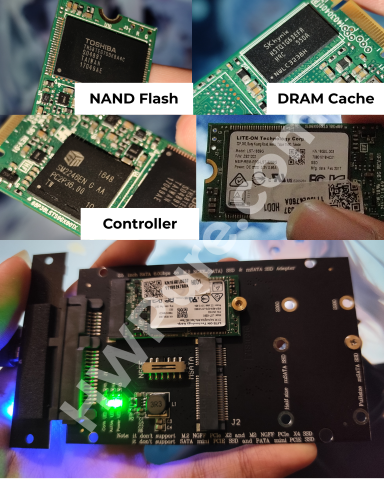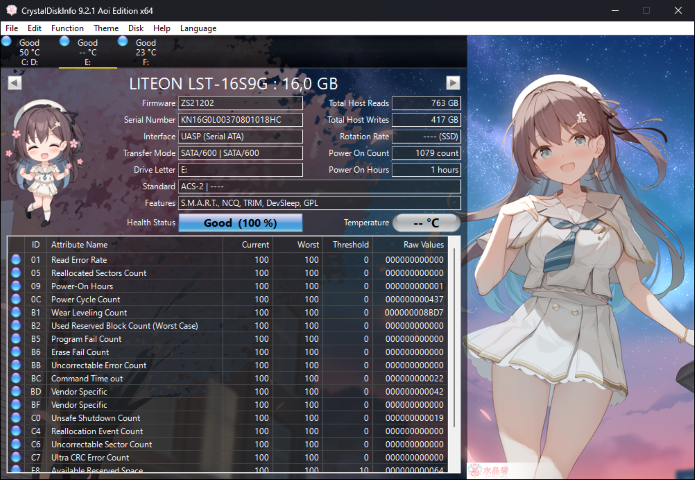Comparing: GeForce MX350 [Disk] vs LITE-ON LST-16S9G 16GB
In this comparison, we analyze two Disks: GeForce MX350 [Disk] and LITE-ON LST-16S9G 16GB, using synthetic benchmark tests to evaluate their overall performance. This side-by-side comparison helps users understand which hardware delivers better value, speed, and efficiency based on standardized testing. Whether you're building a new system or upgrading an existing one, this benchmark-driven evaluation offers valuable insights to guide your decision.
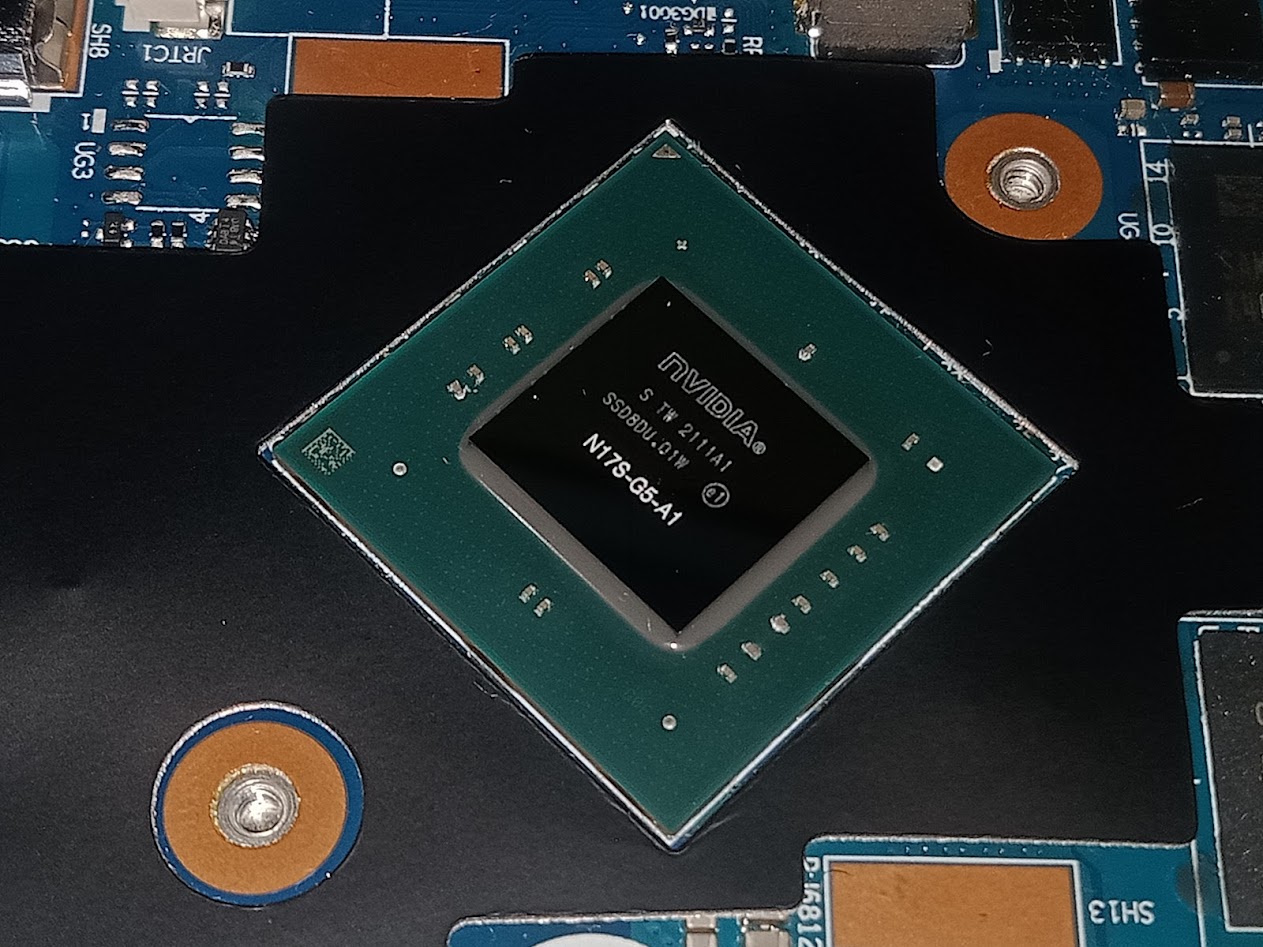
GeForce MX350 [Disk]
| Type: | Disks |
|---|---|
| Model: | GeForce MX350 [Disk] |
| Capacity: | 2GB, 1.5GB |
| Interface: | GDDR5 |
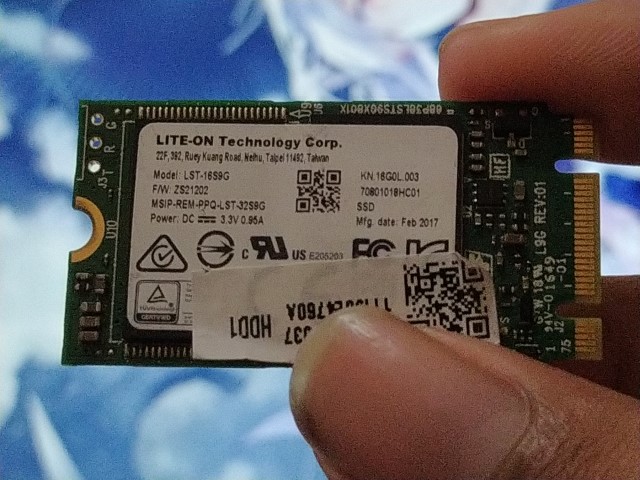
LITE-ON LST-16S9G 16GB
| Type: | Disks |
|---|---|
| Model: | LITE-ON LST-16S9G 16GB |
| Capacity: | 16GB |
| Interface: | SATA-III 6Gbps |
Specification Comparison Table
This specification comparison presents technical details of several devices or components to help you understand the key differences between each option. Use this table as a reference to determine which device best suits your needs.
| Specification | GeForce MX350 [Disk] | LITE-ON LST-16S9G 16GB |
|---|---|---|
| Brand | Samsung | LITE-ON |
| Format | VRAM Disk | SSD M.2 SATA 2242 |
| Capacity | 2GB, 1.5GB | 16GB |
| Interface | GDDR5 | SATA-III 6Gbps |
Submission Comparison Table
This submission comparison table displays the number and details of benchmark data submissions from various devices or components. This information helps you understand the performance based on the benchmarks that have been tested, as well as providing an overview of the consistency and popularity of the available benchmark results.
| No. | Benchmark Software | GeForce MX350 [Disk] | LITE-ON LST-16S9G 16GB |
|---|---|---|---|
| 1 | CrystalDiskMark |
Read: 1113.58 MB/s Write: 995.48 MB/s |
Read: 280.45 MB/s Write: 45.40 MB/s |
Submission Comparison Chart
This chart visualizes the benchmark scores comparison between two hardware devices based on submitted data.
Media Gallery
A collection of photos of tested hardware. These images can help you identify the physical form, model, and variant of the hardware in question. These photos are from our own documentation, and if they are not available we may not be able to document them.
About Hardware GeForce MX350 [Disk]
The NVIDIA GeForce MX350 is an entry-level GPU designed for thin and light laptops, delivering significant graphics performance improvements over the processor's built-in iGPU. The GPU is based on the Pascal architecture with 640 CUDA Cores, and features 2GB or 4GB of GDDR5 memory with 64-bit bus width. The MX350 is generally used for light graphics tasks such as photo editing, light video, and casual gaming, and provides GPU acceleration for CUDA-enabled creative applications.
But in this particular test, a portion of the video memory (VRAM) on the GeForce MX350 was configured as a VRAMDisk. The concept of a VRAMDisk is similar to a RAMDisk, but it uses the VRAM of the GPU as a super-fast storage medium. VRAMDisk allows the creation of temporary, high-speed drives that can be utilized for technical experiments, speed testing, or graphics caching in certain scenarios. Although its capacity is limited and volatile (data is lost on reboot), the high bandwidth and low latency of VRAM provide compelling performance in certain contexts.
The tests were conducted on a Lenovo IdeaPad Slim 3i 14ITL6 laptop with Intel Core i5-1135G7 processor, 12GB DDR4 3200MHz dual channel RAM, and Windows 11 22H2 operating system. The VRAMDisk was created from a 2GB GeForce MX350 GPU, with virtual disk sizes of 1GB and 1.5GB, using special software called GPU RAM Drive.
Benchmark results with CrystalDiskMark recorded read speeds of 1113.58 MB/s and write speeds of 995.48 MB/s, showing the high bandwidth potential of VRAM as a temporary storage medium. Although the performance does not match DDR4-based RAMDisks, VRAMDisks remain a unique and attractive solution for certain technical purposes, especially for users who want to utilize idle VRAM for fast I/O processes. With its dedicated laptop GPU form factor and PCIe x4 Gen 3.0 interface, the GeForce MX350 VRAMDisk opens up new exploration possibilities in the world of experimental graphics-based high-speed storage.
Device test (testbed):
Device: Lenovo IdeaPad Slim 3i 14ITL6
CPU: i5 1135G7
RAM: 12GB DDR4 3200MHz Dual Channel (8+4)
OS: Windows 11 22H2
Friday, 06 August 2021 04:34:19 | Update: 3 weeks ago
About Hardware LITE-ON LST-16S9G 16GB
The LITE-ON LST-16S9G 16GB M.2 SATA is a compact solid-state drive designed to meet the storage needs of devices with limited space, such as mini PCs, older laptops, or embedded systems. With an M.2 2242 form factor and a SATA III 6Gbps interface, this SSD delivers sufficient performance for basic needs, particularly as a boot drive or operating system medium. Despite its 16GB capacity, its internal components are of decent quality for an entry-level class.
This SSD uses the TOSHIBA TH58TEG7DDK8A4C NAND flash chip, known for its durability and stability, combined with SK hynix's DRAM cache (H5TQ1G63EFR) featuring 1GB DDR3 SDRAM specifications—a rare find in SSDs of its class. The use of the Silicon Motion SM2246EN controller adds further value, as it is widely recognized in the SSD world as a reliable and efficient controller for handling light to moderate read/write tasks. This combination makes the LITE-ON LST-16S9G sufficiently capable for tasks such as booting, running a lightweight OS, or storing system configurations.
Performance testing was conducted on a Lenovo IdeaPad Slim 3i 14ITL6 device with 12GB DDR4 dual-channel RAM and the Windows 11 22H2 operating system. The SSD was installed via an M.2 SATA-to-SATA adapter and connected via a USB 3.0 enclosure. Test results showed sequential read speeds of 280MB/s and write speeds of 45MB/s on the CrystalDiskMark benchmark, while AS SSD recorded read speeds of 279MB/s and write speeds of approximately 41.67MB/s. This performance is stable and consistent with the characteristics of a SATA SSD in the low-capacity class, although the write speed is relatively slow for large file transfers.
Despite its limitations, such as limited storage capacity and low write speeds, the LITE-ON LST-16S9G remains an attractive option for users needing a small SSD for specific purposes. It is suitable for use in lightweight operating systems like Linux, custom devices like routers or media players, and as an upgrade solution from an HDD in older systems that only require improved boot speeds and basic application responsiveness. With its generally affordable price and high-quality internal components, this SSD can be a cost-effective yet functional alternative in the world of digital storage.
Device Test (testbed) :
Adapter: M.2 SATA to SATA -> SATA to USB 3.0 (HDD Enclosure)
Device: Lenovo IdeaPad Slim 3i 14ITL6
CPU: i5-1135G7
RAM: 12GB DDR4 3200MHz Dual Channel (8+4)
OS: Windows 11 22H2
* I have tested this hardware in used condition, so its performance may have deteriorated.
Monday, 30 June 2025 20:45:05 | Update: 2 weeks ago

